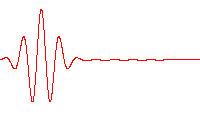
Photo from wikipedia
Author(s): Cao, W; Warrick, ER; Fidler, A; Leone, SR; Neumark, DM | Abstract: © 2018 American Physical Society. The complex behavior of a molecular wave packet initiated by an extreme… Click to show full abstract
Author(s): Cao, W; Warrick, ER; Fidler, A; Leone, SR; Neumark, DM | Abstract: © 2018 American Physical Society. The complex behavior of a molecular wave packet initiated by an extreme ultraviolet (XUV) pulse is investigated with noncollinear wave mixing spectroscopy. A broadband XUV pulse spanning 12-16 eV launches a wave packet in H2 comprising a coherent superposition of multiple electronic and vibrational levels. The molecular wave packet evolves freely until a delayed few-cycle optical laser pulse arrives to induce nonlinear signals in the XUV via four-wave mixing (FWM). The angularly resolved FWM signals encode rich energy exchange processes between the optical laser field and the XUV-excited molecule. The noncollinear geometry enables spatial separation of ladder and V- or Λ-type transitions induced by the optical field. Ladder transitions, in which the energy exchange with the optical field is around 3 eV, appear off axis from the incident XUV beam. Each vibrationally revolved FWM line probes a different part of the wave packet in energy, serving as a promising tool for energetic tomography of molecular wave packets. V- or Λ-type transitions, in which the energy exchange is well under 1 eV, result in on-axis nonlinear signals. The first-order versus third-order interference of the on-axis signal serves as a mapping tool of the energy flow pathways. Intra- and interelectronic potential energy curve transitions are decisively identified. The current study opens possibilities for accessing complete dynamic information in XUV-excited complex systems.
Journal Title: Physical Review A
Year Published: 2018
Link to full text (if available)
Share on Social Media: Sign Up to like & get
recommendations!